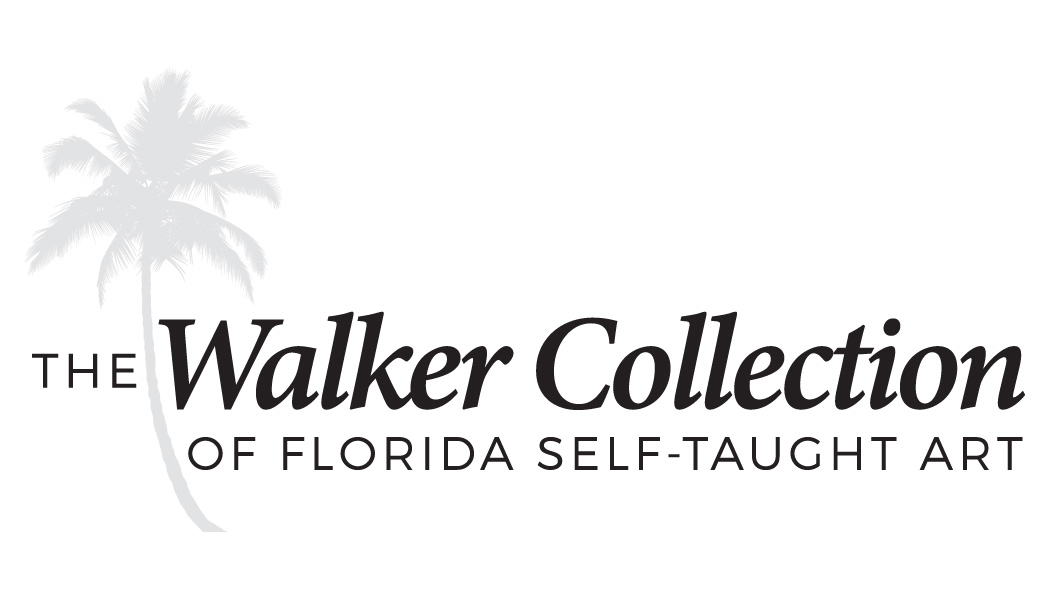February 23 – April 23, 2023
Spruance Gallery
Arcadia Exhibitions is pleased to present “The Highwaymen: Fast Painting the American Dream,” on view from February 23 to April 23, 2023. The exhibition features sixteen tropical landscape paintings produced from 1960 to the early 1990s by eight core members of a loosely affiliated group of 26 African American artists (25 men and one woman) based in Florida.
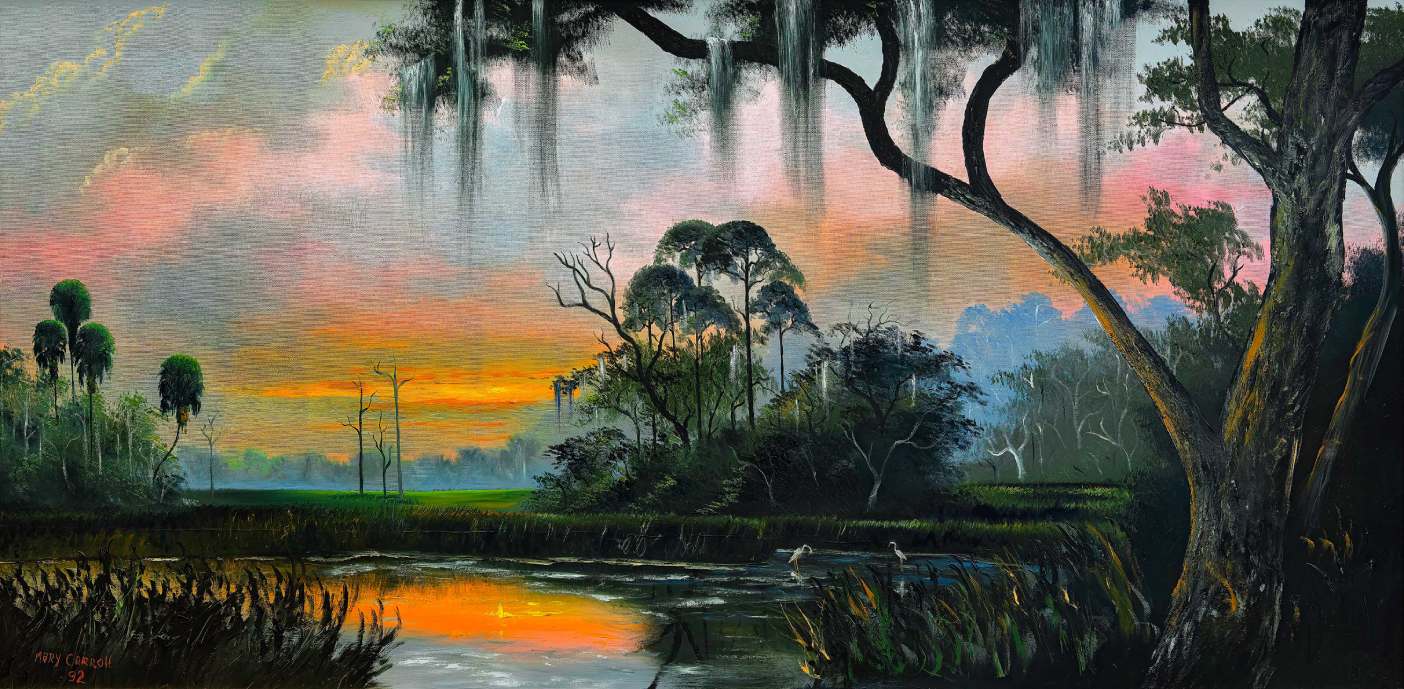
Mary Ann Carroll, Untitled, 1992, oil on Upson board, 24"x 48", Courtesy of The Walker Collection of Florida Self-Taught Art
The Highwaymen were a group of 26 African American painters based in Florida who found commercial success for their tropical landscapes in the 1960s and ’70s. Largely untrained as artists, they were rediscovered in the mid-1990s when they were named the Highwaymen, a moniker that referred to their method of selling their paintings “door-to door and store-to-store” along US Route 1. Circumventing Jim Crow laws, the young artists, primarily based in the city of Fort Pierce, cultivated an innovative entrepreneurial strategy that harnessed quickly painted landscapes as a means to bypass low-paying work in the state’s citrus groves. Their mostly white patrons included new homeowners as well as hotels, restaurants, doctors’ and lawyers’ offices looking for affordable décor during the post-war boom period. In the process, the Highwaymen engendered a unique iteration of romantic regionalism that helped to cultivate the iconography of Florida and the myth of the Sunshine State.
The sixteen paintings on view depict idyllic back-country marshes, windswept beaches, and conditions of light and weather that the artists knew first-hand, executed in a range of “fast painting” processes. These include the use of “wet-on-wet” techniques, palette knives loaded with paint, and assembly-line methods that could generate up to 20 examples a day. Rendered in oil on Upson board (a form of interior wallboard) cut into standard sizes from 4 feet by 8 feet sheets, the paintings were framed with carpenter’s trim, presentation that not only facilitated stacked storage and transport but allowed the works to be sold while still wet, often on the day they were made.
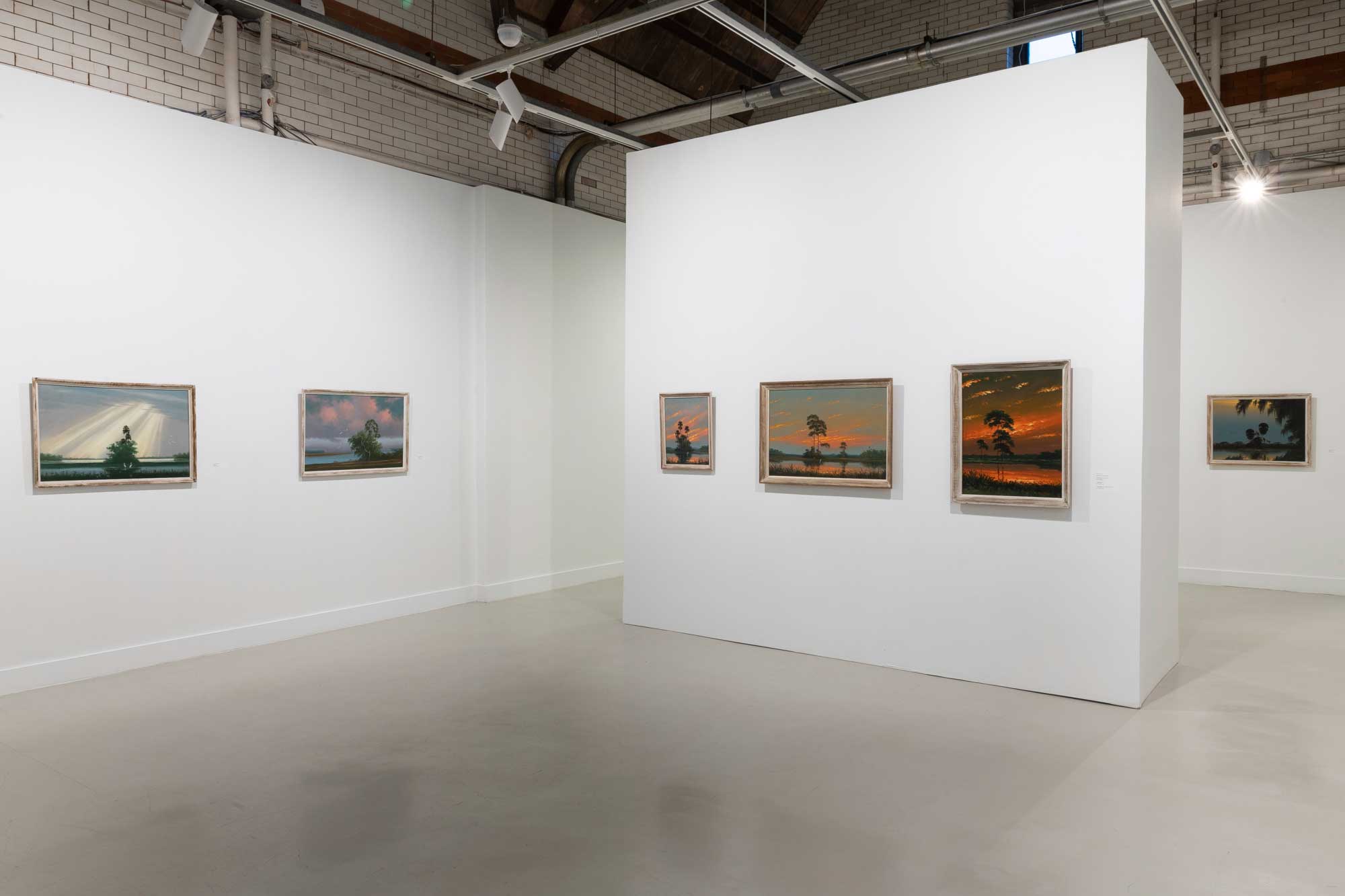
Installation view, "The Highwaymen: Fast Painting the American Dream", Spruance Gallery, photo: Sam Fritch
Merging the traditions of the Hudson River School—including its celebration of unspoiled vistas and ways of rendering them that were distinctly American—with a business model that prioritized production and predated Andy Warhol’s Factory, their collective enterprise eventually yielded over 200,000 paintings. “Brazenly formulaic but fringed with fantasy,” as described by Artforum critic Zack Hatfield, “the paintings parade a wonderfully unprecious attitude about living with, and making one’s living from, art.”
In addition to serving as a compelling example of overcoming systemic racism and economic oppression, the phenomenon of the Highwaymen is also a story of formal invention via emulation and subversion. The work was inspired by the success of A.E. “Bean” Backus (1906 -1990), the white mentor of the group known as “the dean of Florida Landscape painting” based in Fort Pierce. In the early 1950s, Backus welcomed two of the original members, Harold Newton and Alfred Hair—both teenagers at the time—into his studio. Backus convinced Newton to abandon his focus on religious subjects and provided formal lessons to Hair. After three years of training, Hair came to realize, as Highwaymen historian Gary Monroe states, “that as an African American artist he could not attain the same level of success as his white mentor unless he sold scores of paintings at much lower prices.”
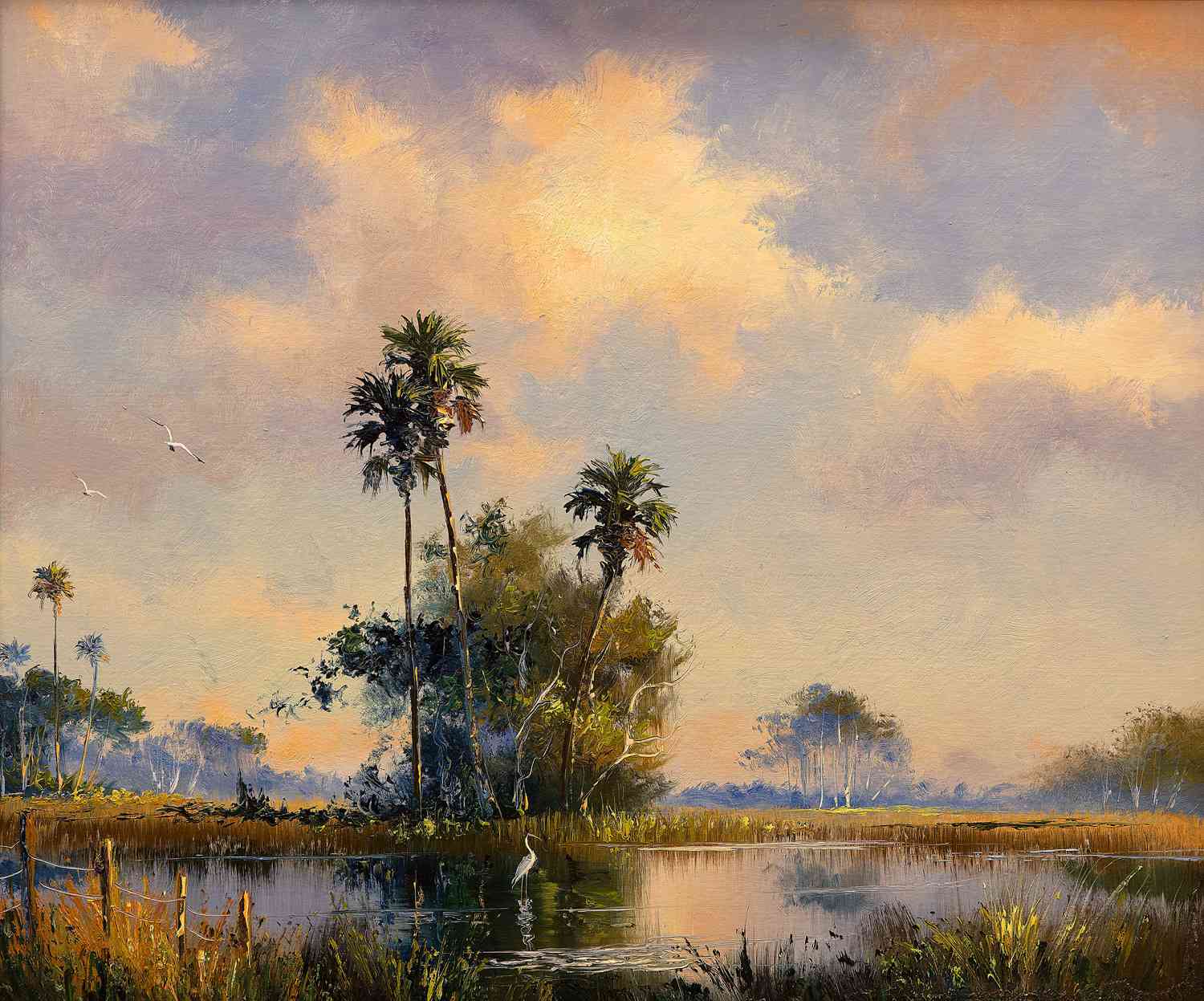
Harold Newton, Untitled, c. 1960-1980, oil on Upson board, 20" x 24", The Walker Collection of Florida Self-Taught Art
Hair’s solution was to accelerate the speed of production, including contracting friends to prepare boards—sometimes nailed to trees in his backyard—and construct frames. Monroe adds that Hair “didn’t know that by working away to build inventory he would inadvertently strip away artifice to reveal archetypes, imagery that was as sublime as it was descriptive.” Hair’s efforts exposed a market for painted fantasies of the region and his success motivated others in his circle to follow his lead. Newton is now recognized for his technical expertise while Hair is regarded as the Highwaymen’s driving force and stylistic catalyst. The eight artists represented in the exhibition, including the group’s only woman, Mary Ann Carroll, continued to paint into the 1990s and beyond, despite their heyday having come to close by 1980.
The exhibition includes works by Al Black (b. 1940), Mary Ann Carroll, (1940-2019), Willie Daniels (1950-2021), James Gibson (1938-2017), Alfred Hair (1942-1970), Roy McLendon (b.1932), Harold Newton (1934-1994), and Livingston Roberts (1942-2004).
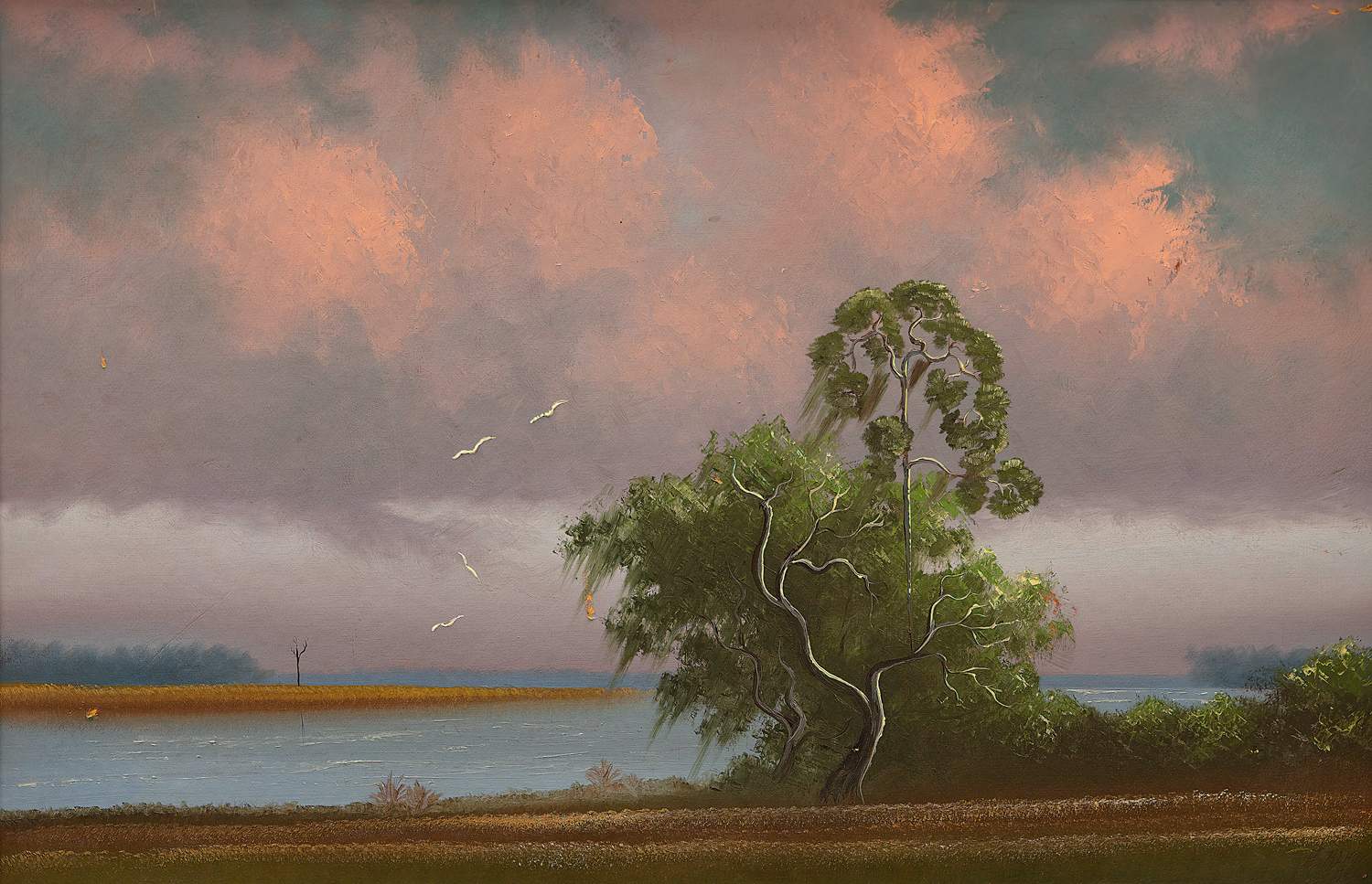
Al Black, Untitled, 1978, oil on Upson board, 24" x 36", The Walker Collection of Florida Self-Taught Art
Paintings by the Highwaymen are included in the permanent collection of the Smithsonian’s National Museum of African American History and Culture (Washington, D.C.) and a growing number of public collections in Florida. In 2006, the Fort Lauderdale Museum of Art became the first accredited museum to present a curated exhibition of Highwaymen paintings. More recently, in 2020, the Orlando Museum of Art hosted a 100-work survey featuring the eight core members. Commercial gallery presentations of the paintings, including exhibitions at Nina Johnson (Miami) in 2019, and Charles Moffett (New York) in 2021, have also helped to augment the critical reception of the work.
All works included in the exhibition are on loan courtesy The Walker Collection of Florida Self-Taught Art. Special thanks to Lance Walker, Dorothy Hussey, and Gary Monroe with additional gratitude to Nina Johnson, Alex Baker, and John Ollman.
About the Speaker:
Gary Monroe has been the primary voice about the Highwaymen since 2001 when the University Press of Florida (UPF) released his book, The Highwaymen: Florida’s African-American Landscape Painters. Four other books published by UPF about the individual painters in the group followed. These include Harold Newton: The Original Highwayman (2007), The Highwaymen Murals: Al Black’s Concrete Dreams (2009), Mary Ann Carroll: First Lady of the Highwaymen (2014), and Alfred Hair: Heart of the Highwaymen (2020). A native of Florida, Monroe first encountered the Highwaymen in 1997 as part of his creative practice as a photographer and is credited with identifying the 26 artists as part of his years-long research. His writing and lectures have secured the history of the group and have been instrumental in establishing a generative context for the interpretation of their work and its contribution to American landscape painting.
